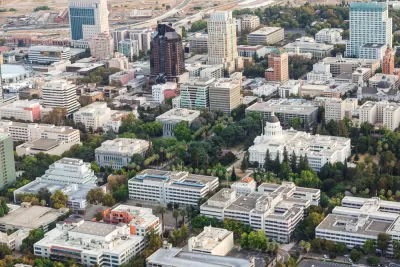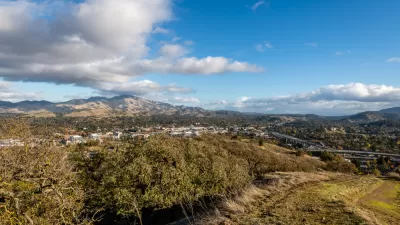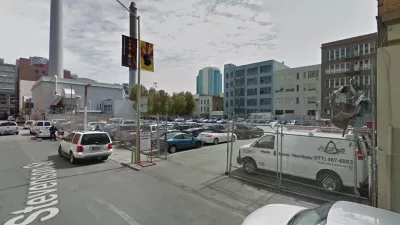The future of planning in California depends on how lawyers reconcile the Housing Accountability Act with the California Environmental Quality Act.

Christopher S. Elmendorf and Tim Duncheon write the first in a series of blog posts to examine the merging conflict between the state of California's Housing Accountability Act (HAA) and the California Environmental Quality Act (CEQA).
According to Elmendorf and Duncheon, the emerging conflict was made obvious when the San Francisco Board of Supervisors rejected a proposal for 495 apartments on a downtown parking lot. "Oakland and Sonoma have also used the same maneuver, albeit to much less fanfare."
According to the article, these examples are early indications of an "epic clash" between two examples of legal scholars Bill Eskridge and John Ferejohn have termed "super-statutes," and defined as followed:
(1) seeks to establish a new normative or institutional framework for state policy and (2) over time does “stick” in the public culture such that (3) the super-statute and its institutional or normative principles have a broad effect on the law—including an effect beyond the four corners of the statute.
The fact that both laws could be fairly classified as super-statutes creates a massive problem, which is likely to be litigated again and again for the foreseeable future: both the laws "could not be more different in their basic institutional and normative principles," according to Elmendorf and Duncheon.
In the second post in the series, which has also been published as of this writing, the authors show that CEQA and the HAA further elaborate on the idea that both CEQA and the HAA have plausible claims to being super-statutes.
FULL STORY: A Seismic Shift in Land Use Law?

Planetizen Federal Action Tracker
A weekly monitor of how Trump’s orders and actions are impacting planners and planning in America.

Congressman Proposes Bill to Rename DC Metro “Trump Train”
The Make Autorail Great Again Act would withhold federal funding to the system until the Washington Metropolitan Area Transit Authority (WMATA), rebrands as the Washington Metropolitan Authority for Greater Access (WMAGA).

The Simple Legislative Tool Transforming Vacant Downtowns
In California, Michigan and Georgia, an easy win is bringing dollars — and delight — back to city centers.

The States Losing Rural Delivery Rooms at an Alarming Pace
In some states, as few as 9% of rural hospitals still deliver babies. As a result, rising pre-term births, no adequate pre-term care and "harrowing" close calls are a growing reality.

The Small South Asian Republic Going all in on EVs
Thanks to one simple policy change less than five years ago, 65% of new cars in this Himalayan country are now electric.

DC Backpedals on Bike Lane Protection, Swaps Barriers for Paint
Citing aesthetic concerns, the city is removing the concrete barriers and flexposts that once separated Arizona Avenue cyclists from motor vehicles.
Urban Design for Planners 1: Software Tools
This six-course series explores essential urban design concepts using open source software and equips planners with the tools they need to participate fully in the urban design process.
Planning for Universal Design
Learn the tools for implementing Universal Design in planning regulations.
Smith Gee Studio
City of Charlotte
City of Camden Redevelopment Agency
City of Astoria
Transportation Research & Education Center (TREC) at Portland State University
US High Speed Rail Association
City of Camden Redevelopment Agency
Municipality of Princeton (NJ)





























